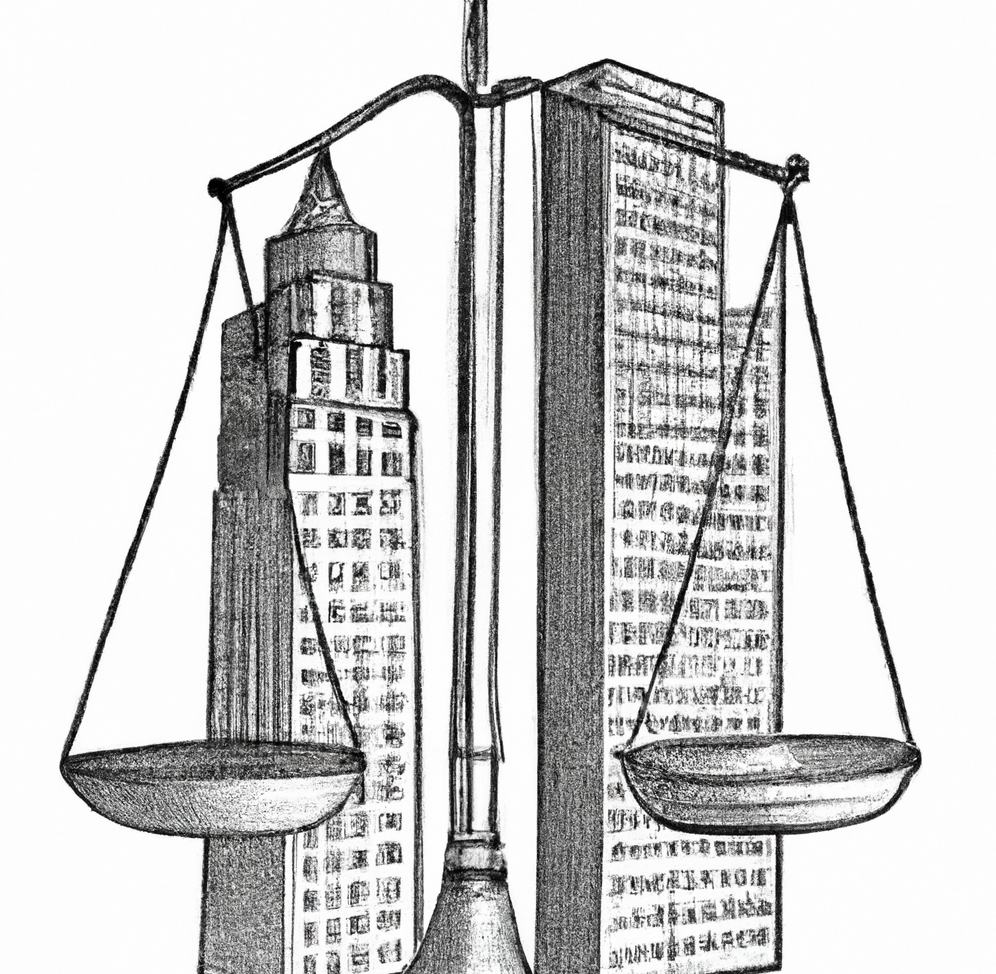Navigating the world of private equity funding can be complex, but understanding the equity waterfall model can help demystify the process. This financial mechanism plays a crucial role in aligning the interests of investors and fund managers, ensuring that all parties are motivated to achieve optimal returns. In this blog post, we will explore the basics of equity waterfalls, their components, and their benefits, providing you with a comprehensive understanding of this essential aspect of private equity funding.
Key Takeaways
- Equity waterfalls are a method of allocating profits among stakeholders to protect investor capital and incentivize GPs.
- The equity waterfall model is composed of various components, including return hurdles, preferred returns, lookback provisions etc., for aligning interests between the GP & LPs.
- Equity Waterfall Structures provide incentives for investment managers to achieve high returns while fostering successful partnerships.
The Basics of Equity Waterfalls

Comprehending equity waterfalls is fundamental in the field of private equity investments. These distribution models serve as a method for allocating profits, often referred to as cash flows, among the various stakeholders involved in an investment. The primary purpose of an equity waterfall is to ensure that investors receive their initial investment plus a predetermined rate of return – the hurdle rate – before any excess cash flow is distributed. This setup prioritizes investor capital protection and aligns the interests of the general partners (GPs) and limited partners (LPs) by motivating the GPs to optimize overall fund returns.
Equity distribution waterfalls typically consist of several tiers, each involving specific financial milestones and distributions to the parties involved. These tiers include:
- Return of capital
- Preferred return
- Catch-up tranche
- Carried interest/residual split
In essence, the waterfall structure aims to balance the financial incentives of both the GPs and LPs through thoughtful cash flow distributions, ensuring the efficient allocation of remaining cash flow.
Definition and Purpose
Acting as a blueprint, the equity waterfall model guides the division of cash flow in commercial investment property. Its main goals are to recoup the initial investment and maximize overall fund returns. This model is designed to return the invested capital to investors, provide adequate compensation to the LPs for the risk taken as the main equity capital provider in the project, and incentivize high returns while ensuring that the interests of all parties are aligned.
The equity waterfall model is composed of various components, such as:
- Return of capital
- Preferred return
- Catch-up tranche
- Carried interest/residual split
Each of these components plays a unique role in determining the distribution of profits, ensuring that the interests of both the GPs and LPs are accounted for and prioritized.
Components of an Equity Waterfall
An equity waterfall has several key components, each serving a distinct purpose and function. These include:
- Return hurdles: These represent benchmarks that must be achieved in order to distribute profits.
- Preferred return: This is the right of the first claim on profits until a desired target return has been achieved. It is a key element of capital investment strategy.
- Lookback provision: This serves to ensure that the GP does not receive an excessive payment by taking into account prior distributions.
These components work together to determine how profits are distributed among equity holders.
The catch-up provision stipulates that the investor will receive 100% of all profit distributions until a pre-defined rate of return has been realized. Subsequently, once the required return has been achieved, all profits will be allocated to the sponsor until the sponsor has been “caught up”. Lastly, the promote refers to the additional share of cash flow that the sponsor or general partner will receive when return hurdles are met.
Grasping these components is vital to understand how equity waterfalls operate and their role in aligning the interests of all investment stakeholders. By ensuring that each component is accounted for and structured appropriately, the equity waterfall model effectively balances the financial incentives of both the GPs and LPs, promoting a successful investment partnership.
Private Equity Investment Structure
Private equity investment structures, such as private equity funds, center around two main groups – the General Partner (GP) and Limited Partner(s) (LPs). These two parties play a pivotal role in the whole process.
The GP is responsible for:
- Identifying the property
- Conducting due diligence
- Organizing financing
- Overseeing the acquisition process
The LPs provide the majority of the equity and expect a return on their investment.
The objective of a private equity investment structure is to harmonize the interests of the stakeholders who invest in a single transaction or a private equity fund.
This structure typically involves:
- A private equity firm acting as the ‘General Partner’
- Investors contributing capital to become ‘Limited Partners’ of the fund
- The fund being structured as a ‘Limited Partnership’
- The partnership agreement outlining the terms and conditions of the fund, including the distribution waterfall, which determines the profits distribution among the investors and the fund managers.
General Partner (GP) Responsibilities
In private equity investment structures, the General Partner (GP) holds a significant role. Their primary responsibilities include overseeing assets, identifying potential investment opportunities, and performing due diligence. In essence, the GP manages the logistics, financing, and property management aspects of the investment.
By effectively managing these aspects, the GP ensures that the investment is successful and that the interests of all parties involved, including the LPs, are aligned. The GP’s role is crucial to the overall success of a private equity fund, as their expertise and management skills directly impact the fund’s performance.
Limited Partner (LP) Involvement
Similarly, the Limited Partner(s) (LPs) are indispensable to the private equity investment structure. They typically provide the majority of the equity and anticipate a return on their investment. While the LPs are primarily passive investors and do not take part in the daily operations of the fund, they are entitled to the majority of financial returns.
Their involvement in the fund is primarily financial, and their primary expectation is to receive a return on their investment. The LPs rely on the expertise and management skills of the GP to ensure that the fund performs well and generates the desired returns. The relationship between the GP and LPs is crucial to the success of a private equity investment structure, as their interests must be aligned to achieve optimal results.
Key Documents and Terminology
Familiarity with key documents and terminology is necessary when navigating the equity waterfall model of private equity funding. The partnership agreement is a legally-binding document that details the rights and responsibilities of each partner, the distribution of profits, and the management of the partnership.
Another critical term is carried interest, which refers to the portion of profits that the General Partner (GP) receives from the partnership. By understanding these key documents and terms, investors and managers can effectively navigate the complex landscape of private equity funding.
Partnership Agreement
In the equity waterfall model of private equity funding, the partnership agreement holds great significance. It outlines the terms and conditions of the investment and profit sharing arrangement for all parties involved. This agreement is significant because it governs the relationship between the general partner (GP) and limited partners (LPs), ensuring that the interests of all parties are aligned and that the distribution of profits is clearly defined.
By carefully reviewing the partnership agreement, investors and managers can gain a clear understanding of the expectations and responsibilities of each party involved in the investment. This document serves as the foundation for a successful investment partnership, as it establishes the agreed-upon terms and conditions for the equity waterfall model and the distribution of profits.
Carried Interest
Alongside the partnership agreement, carried interest is another term of high importance in the equity waterfall model of private equity funding. It represents the portion of profits that the General Partner (GP) receives from the partnership. This share of profits is typically a percentage of the profits to which the GP is entitled after the Limited Partners (LPs) have received their return on investment.
Understanding the concept of carried interest is crucial for both GPs and LPs, as it directly impacts the distribution of profits in an equity waterfall model. Carried interest serves as an incentive for the GP to manage the fund effectively and achieve high returns, ultimately benefiting all parties involved in the investment partnership.
Equity Waterfall Examples: American vs. European Models

The American and European models constitute two prime examples of equity waterfall models. These models differ in the priority given to investors and general partners when distributing profits. Understanding the distinctions between these models is essential for investors and managers when choosing the appropriate equity waterfall model for their investment partnerships.
The American model prioritizes the return of capital and preferred return to LPs before the GP receives any profits, while the European model distributes profits to both LPs and GP simultaneously, based on predetermined percentages. Both models have their advantages and drawbacks, and the choice between them will depend on the specific needs and preferences of the parties involved in the investment partnership.
American Model
Also known as the deal-by-deal model, the American Model of the equity waterfall model of private equity funding stands apart from the European model due to its unique approach to allocating cash flow and profits among investors and participants. In the American Model, the return of capital and preferred return to LPs is given priority before the GP receives any profits.
This model emphasizes the protection of the LPs’ capital investment and ensures that they receive a predetermined return before the GP begins to share in the profits. As a result, the American Model can be seen as more conservative and protective of the interests of the LPs, while still providing incentives for the GP to achieve high returns.
European Model
Unlike the American Model, the European Model of the equity waterfall model of private equity funding distributes returns to both LPs and GP at the same time, following predetermined proportions. This distribution structure determines the allocation of distribution proceeds at a fund level, rather than on a deal-by-deal basis.
The European Model is often seen as more equitable, as it allows both the GP and LPs to share in the profits simultaneously, based on predetermined percentages. However, this model may also result in the GP receiving a share of the profits before the LPs have fully recouped their initial investment.
As with the American Model, the choice between the European Model and the American Model will depend on the specific needs and preferences of the parties involved in the investment partnership.
Analyzing a Real Estate Equity Waterfall Example

To better understand the equity waterfall model in action, let’s consider a real estate equity waterfall example with three tiers: Return of Capital, Preferred Return, and Carried Interest/Residual Split. This example will demonstrate how cash flows are distributed based on the Internal Rate of Return (IRR) and the specific structure of the equity waterfall model.
Tier 1: Return of Capital
The first tier of the real estate equity waterfall example primarily aims at returning the initial capital investment to the LPs. This tier ensures that the LPs receive their initial capital contributions and any preferred return rate stipulated in the investment agreement.
By prioritizing the return of capital to the LPs, the equity waterfall model effectively safeguards the interests of the LPs and provides a solid foundation for the investment partnership. This tier lays the groundwork for the subsequent tiers in the equity waterfall model, where profits are distributed based on predetermined rates of return and specific allocation structures.
Tier 2: Preferred Return

The second tier of the real estate equity waterfall example transitions the focus to provision of a predetermined preferred return to the LPs, prior to distributing any profits to the GP. In this example, the preferred return hurdle is a 10% annual return on the invested capital. If distributions fail to meet this hurdle, the deficiency will be carried over to the following years and compounded annually at the preferred rate of return.
The preferred return tier serves as an additional layer of protection for the LPs, as it guarantees that they receive a minimum return on their investment before the GP begins to share in the profits. This tier also ensures that the GP is incentivized to achieve high returns, as their share of the profits will only be realized once the LPs have received their preferred return.
Tier 3: Carried Interest/Residual Split

In the final tier of the real estate equity waterfall example, the carried interest or residual split occurs. Here, the remaining profits are shared between the GP and LPs according to set percentages. This tier is crucial for incentivizing the GP to manage the fund effectively and achieve high returns, ultimately benefiting all parties involved in the investment partnership.
In more complex equity waterfall structures, there may be additional tiers or “promotes” that further incentivize the GP to strive for optimal investment performance. These additional tiers can be structured in various ways, depending on the specific needs and preferences of the parties involved in the investment partnership.
Benefits of Equity Waterfall Structures
Utilizing private equity waterfall structures in private equity investments yields several distinct benefits. One major advantage is the ability to incentivize high returns for investment managers. By structuring the distribution of profits in a manner that rewards the GP for achieving high returns, the equity waterfall model encourages all parties involved in the investment partnership to strive for optimal performance. To better understand this concept, consider examining a private equity waterfall example.
Another significant benefit of equity waterfall structures is the alignment of interests between the GP and LPs. By ensuring that the interests of both parties are accounted for and prioritized, the equity waterfall model promotes successful investment partnerships and fosters trust and collaboration between the GP and LPs.
Incentivizing High Returns
The equity waterfall model encourages high returns through mechanisms like:
- Preferred returns: a minimum rate of return that must be realized before any other distributions are made
- Hurdle rates: minimum rates of return that must be achieved in order for profits to be shared between the GP and LP
- Promote structures: bonus structures that incentivize the GP to achieve higher returns
These mechanisms within the equity waterfall model ensure that investment managers are motivated to deliver high returns, ultimately benefiting both the GP and LPs. By incentivizing high performance, the equity waterfall model drives the success of the investment partnership and generates greater returns for all parties involved.
Aligning Interests
Besides, equity waterfall structures are instrumental in aligning the interests of investors and managers in private equity investments. By carefully structuring the distribution of profits in a way that is beneficial to all parties involved, the equity waterfall model promotes collaboration and trust among the GP and LPs, ultimately contributing to the success of the investment partnership.
Moreover, the equity waterfall model ensures that the financial incentives of the GP and LPs are in harmony, as it distributes cash while maintaining alignment of interests, rewarding the operating partner, and providing financial incentives for increased returns. This alignment of interests is essential for fostering a successful investment partnership, as it encourages all parties to work together toward a common goal.
Summary
In conclusion, the equity waterfall model is an essential aspect of private equity funding, providing a framework for the distribution of profits among investors and managers. By offering a structured approach to profit allocation, this model ensures that the interests of all parties involved are aligned, ultimately fostering successful investment partnerships. With a clear understanding of the equity waterfall model, its components, and its benefits, investors and managers can navigate the complex landscape of private equity funding and work together toward the common goal of achieving optimal returns.
Frequently Asked Questions
What is an equity waterfall?
An equity waterfall is a mechanism used to distribute the profits of a private equity investment among partners, particularly in the real estate industry.
What is the 80 20 split waterfall?
The 80/20 split waterfall is a private equity distribution method in which 80% of the proceeds are given to investors and 20% goes to the private equity firm.
What are the tiers of a waterfall?
Waterfall structures typically consist of four tiers: return of capital, preferred return, catch-up, and carried interest. The two most common types are American and European, with the former favoring the investment manager and the latter being more investor-friendly.
What is the waterfall model of valuation?
The Waterfall Model of Valuation is a tool that visually demonstrates the sequential breakdown of a starting value to a final result, illustrating intermediate values and ‘leakage’ points throughout the process. It can be used by companies to track data at each step and display returns for stakeholders.
What are the primary components of an equity waterfall?
The primary components of an equity waterfall are return hurdles, preferred return, lookback provision, catch-up provision, and promote.


